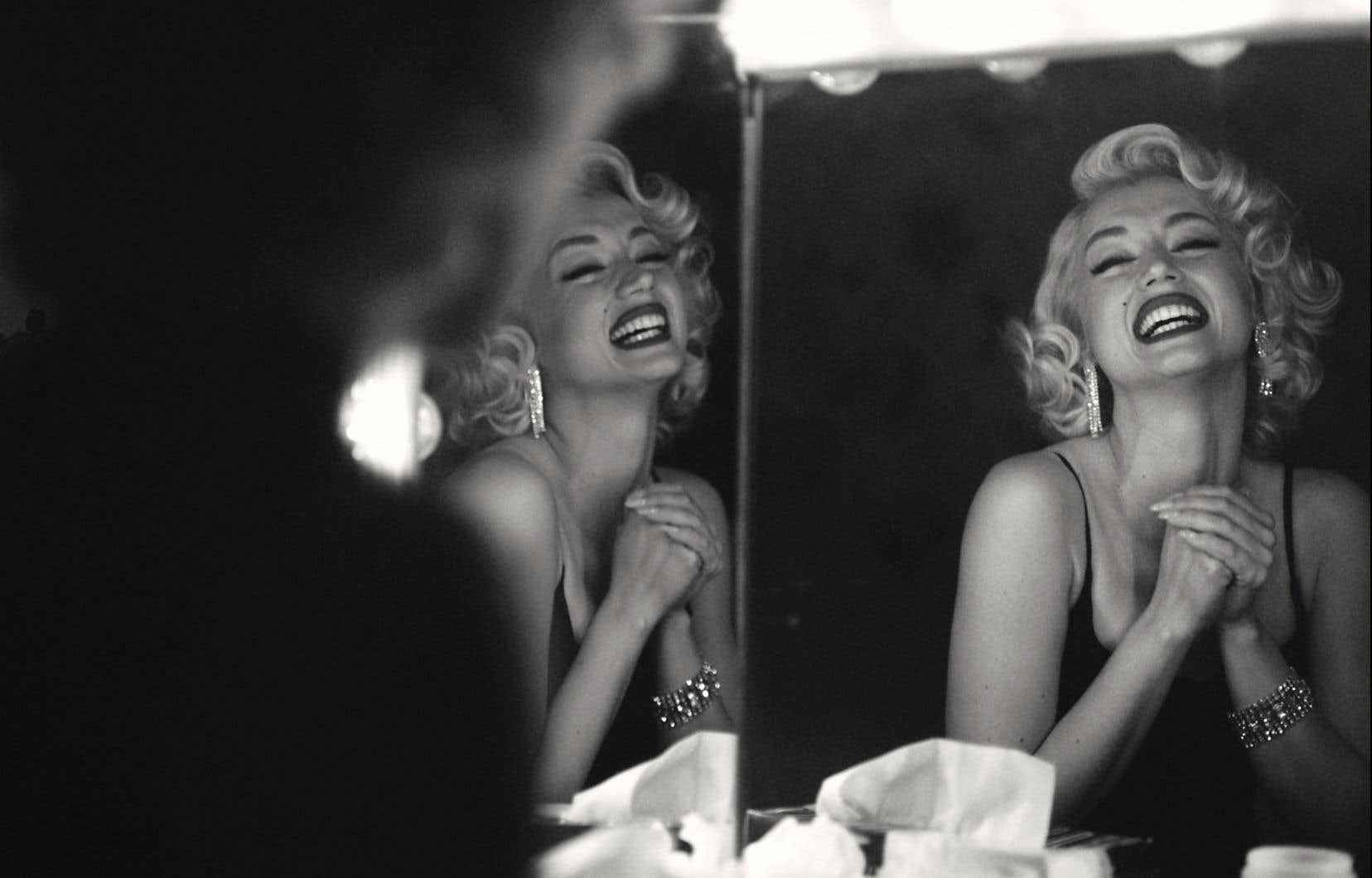Born Norma Jean Mortenson, or Baker, depending on the source, she had an unhappy childhood. Dreaming of cinema, she reinvented herself and came into the world a second time under the name of Marilyn Monroe. She had a meteoric rise; we tore her away, we wanted her. However, despite the glory, the malaise that had inhabited her since she was little never left her. On the contrary, his despair only grew. This dichotomy between “Norma” and “Marilyn”, Andrew Dominik evokes it brilliantly in Blonde hair, his film based on the biographical fiction of Joyce Carol Oates. In a mind-blowing performance, Ana de Armas, who spoke to us exclusively in Canada with the filmmaker, literally brings Marilyn back to life.
The challenge was titanic for the actress of Cuban origin, whose international career exploded in the wake of her participation in the film blade runner 2049, by Denis Villeneuve. Indeed, how do we prepare to embody the one who remains, without doubt, the most famous figure of the seventh art? And one of the most gifted actresses of all time, one would be tempted to add.
“It was a very long, very complex process, because there were multiple psychological layers. I worked closely with Andrew. Besides Joyce Carol Oates’ book, I had hours and hours of audio material, films of Marilyn… The interviews, the photos… Andrew created an incredible visual bible for the team. Basically, I tried to find the human being behind Marilyn Monroe. I tried to find his emotional truth. And, yes, I too think she was extremely talented. »
Andrew Dominik, who tried to get the project off the ground in 2010 with Naomi Watts, then Jessica Chastain, without success, opines before going further: “I confess that I never took a particular interest in her before diving into Blonde hair. My knowledge was superficial. But watching her films, I discovered that she had genius. His performance in The Prince and the Showgirl (The Prince and the Dancer) is extraordinary. »
A very close Marilyn
With skill, the film offers an alternation of significant episodes documented and sequences relating to the calculation intended for a “fictional biography”. This bias is one of the many aspects of Joyce Carol Oates’ work that appealed to Andrew Dominik.
“However, what I liked most about Blonde hair, is that the book offers a version of what it is to be a woman that corresponds quite closely to what several of my female friends have told me over time, he confides. There was also this aspect, how to say…? When you know a person intimately, you discover that they carry all kinds of little stories and memories that contribute to who they are. The book manages to recreate that, but with one of the most famous people of all time as its protagonist. Thus, Marilyn suddenly becomes very close, accessible. »
However, if this phenomenon of proximity works to this point, it is largely thanks to Ana de Armas. Metamorphosed, the star of Knives Out (At loggerheads) is staggeringly true.
“I’m not an actress who ‘maintains’ the character during the entire shoot. It doesn’t match my personality. It was important for me to get out of it, because it was very heavy, very sad — quite the opposite of the atmosphere on the set. This heaviness and sadness stayed with me for the nine weeks of filming, but at the same time, the adventure was so joyful and enjoyable… It was so creatively satisfying. So it’s paradoxical, because I was deeply sad throughout, and deeply happy. »
Manhandled by a schizophrenic mother in distress, tossed between foster homes and orphanages, raped by a studio executive, cheated in negotiated salaries while she reigned over the box office, rarely taken seriously with her label of “blonde brainless”, or “ dumb-blonde “, she fights, in Blonde hair, against the current that threatens to prevail. In vain.
To specify Andrew Dominik: “Norma always has this feeling that she doesn’t come close to Marilyn. She carries the stigma of having been an unwanted child. »
In the film, we see her torn between the perfect image created by the studios (and then refined by herself) and what she is in private. The tension between Marilyn and Norma is constant, heartbreaking.
A new meaning
River, with its duration of almost three hours, Blonde hair is visually and narratively ambitious, similar to Andrew Dominik’s previous works, such as The Assassination of Jesse James by the Coward Robert Ford. The film thus goes from black and white to color in an impressionistic flow as seductive as it is aggressive, in order to make us feel better what Marilyn herself could feel.
“I imagined her as a prisoner of her memories,” explains the filmmaker. I decided to use familiar images, the kind you’ll find on a Google search, but present them in a way that gives them new meaning. That goes for the use of his song too bye bye baby, here associated with an abortion. References to Joe DiMaggio are no longer romantic…”
The idea is not to demolish the legend, but to explore Norma/Marilyn’s painful journey. Moreover, like most moviegoers, Ana de Armas had a certain perception of the “Marilyn myth” before joining the project. His vision is now different.
“I grew up watching his films, but I didn’t know his story. Everything I learned in the film about Norma was new. How she lived this career, this destiny, how she did what she could… Now I associate her performances in each film with what was going on in her life at that time, so I perceive them other. What was hidden under each performance, the personal context… I became very protective of him,” concludes Ana de Armas.
The film Blonde hair hits theaters on September 23, then hits Netflix on September 28.
